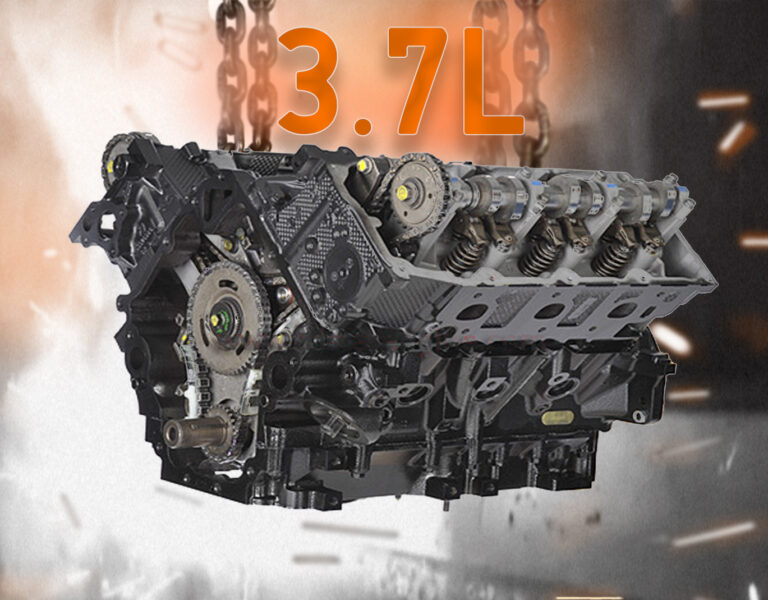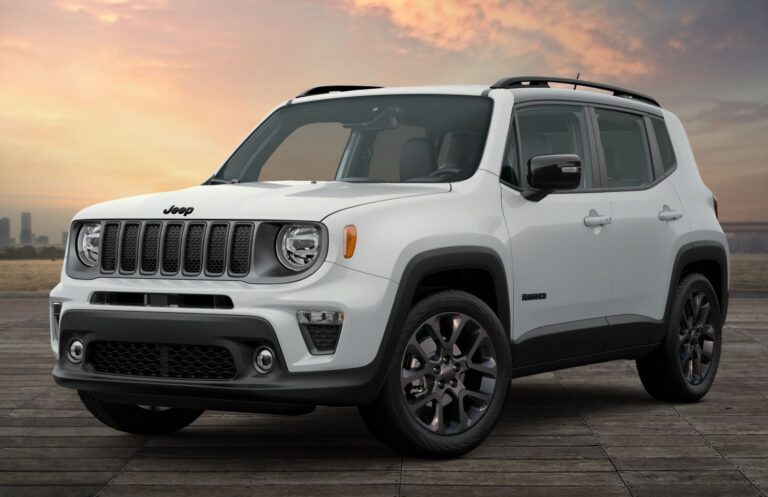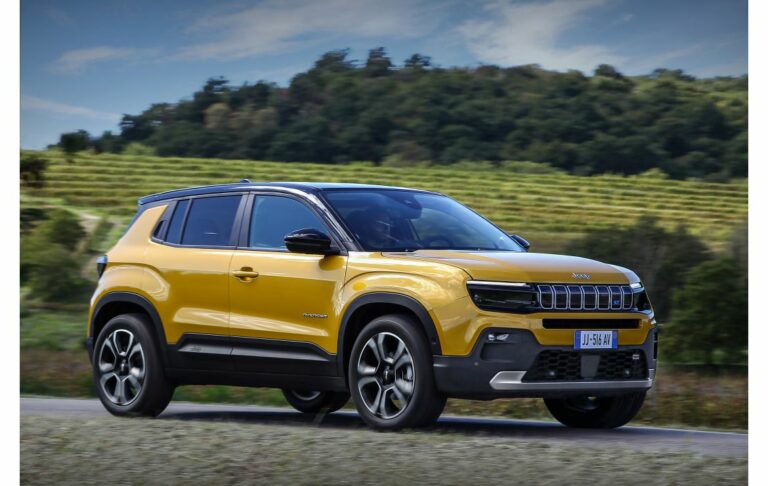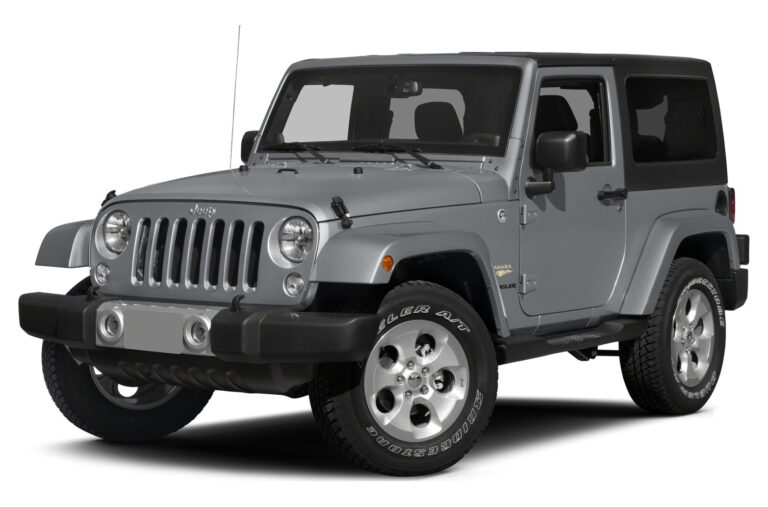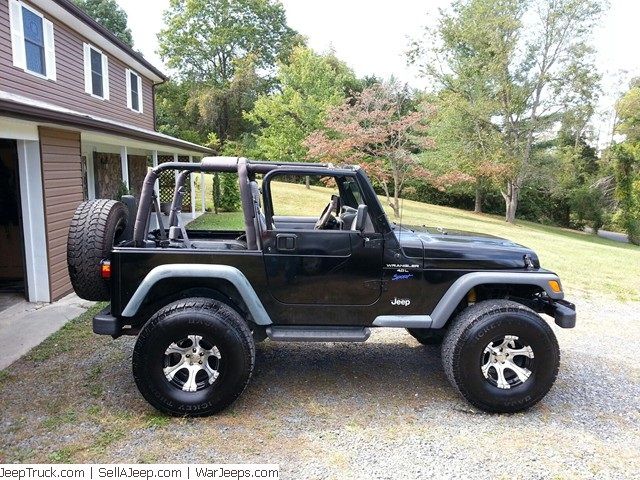Classic Jeep CJ For Sale: Your Ultimate Guide to Owning an Icon
Classic Jeep CJ For Sale: Your Ultimate Guide to Owning an Icon jeeps.truckstrend.com
The rumble of a classic engine, the wind in your hair, and the undeniable sense of adventure – for many, the Classic Jeep CJ embodies the purest form of automotive freedom. Far more than just a vehicle, the Civilian Jeep (CJ) series represents a pivotal piece of American history, a rugged workhorse that transitioned from wartime hero to civilian legend. For enthusiasts and newcomers alike, the prospect of finding a "Classic Jeep CJ for sale" isn’t just about acquiring a mode of transport; it’s about investing in a lifestyle, a community, and a tangible piece of automotive heritage. This comprehensive guide will navigate you through the exhilarating journey of understanding, finding, and ultimately owning one of these timeless machines.
The Enduring Legacy of the Jeep CJ Series
Classic Jeep CJ For Sale: Your Ultimate Guide to Owning an Icon
Born from the battlefields of World War II, the Willys MB and Ford GPW military Jeeps proved their mettle, leading to an overwhelming demand for a civilian version. Thus, the CJ series was born in 1945 with the CJ-2A, quickly establishing itself as the quintessential utility vehicle. Over the decades, the CJ evolved through several iterations, each retaining the core tenets of simplicity, ruggedness, and unparalleled off-road capability.
From the early flat-fender CJ-2A and CJ-3A, to the distinct "high-hood" CJ-3B, and the immensely popular CJ-5 (the longest-produced model from 1955-1983), each model etched its unique mark. The CJ-7, introduced in 1976, brought a wider wheelbase, offering more stability and comfort, while the CJ-8 Scrambler (1981-1986) provided a distinctive pickup truck variant, now highly sought after. Though production ceased in 1986, giving way to the Wrangler series, the legacy of the CJ lives on, a testament to its timeless design and enduring appeal.
Why Buy a Classic Jeep CJ? Benefits and Appeal
The allure of a classic CJ extends far beyond mere nostalgia. Owning one offers a unique blend of benefits that modern vehicles simply cannot replicate:
- Authentic Off-Road Prowess: CJs were built for purpose. Their simple, robust ladder frames, solid axles, and leaf-spring suspension systems, combined with powerful 4×4 drivetrains, make them incredibly capable off-road machines, even by today’s standards. They are true go-anywhere vehicles.
- Unmatched Customization Potential: The aftermarket for CJ parts and accessories is colossal. From lift kits and larger tires to engine swaps and interior upgrades, you can personalize a CJ to your heart’s content, creating a vehicle that perfectly reflects your style and intended use.
- A Piece of History: Owning a CJ is like owning a tangible slice of American ingenuity and adventure. Each dent and faded paint patch tells a story, connecting you to generations of explorers, farmers, and thrill-seekers.
- Vibrant Community: The CJ ownership community is passionate and welcoming. Forums, clubs, and events abound, offering a wealth of knowledge, camaraderie, and opportunities to share your passion.
- Potential Investment: While not all CJs will skyrocket in value, well-maintained, original, or professionally restored examples, particularly rare models like the Scrambler or early flat-fenders, can appreciate over time, making them a potentially sound investment.
- Simplicity and Repairability: Lacking the complex electronics of modern vehicles, CJs are generally simpler to diagnose and repair. Many maintenance tasks can be tackled by a home mechanic, fostering a deeper connection with your vehicle.

Navigating the Market: Where to Find a Classic CJ

Finding the right Classic Jeep CJ for sale requires patience and a strategic approach. The market is diverse, ranging from pristine show vehicles to challenging project rigs.
- Online Marketplaces: Websites like eBay Motors, Craigslist, Facebook Marketplace, and dedicated automotive classifieds (e.g., Hemmings, AutoTrader Classics) are popular starting points. Be diligent in filtering results and always request extensive photos and videos.
- Specialty Dealers & Brokers: Several reputable dealerships specialize in classic 4x4s and vintage Jeeps. While prices might be higher, you often gain peace of mind through pre-inspected vehicles, clear titles, and sometimes even warranties.
- Online Auctions: Platforms like Bring a Trailer and Mecum Auctions often feature high-quality, well-documented CJs. These can be competitive but offer a transparent buying process with detailed listings and expert commentary.
- Dedicated Forums & Clubs: Jeep-specific forums (e.g., JeepForum, CJ-specific enthusiast sites) and local off-road clubs often have classified sections where members sell their vehicles. This can be an excellent source for well-loved and maintained CJs within a trusted community.
- Word of Mouth & Local Classifieds: Don’t underestimate the power of local advertising or simply asking around at car shows and swap meets. Sometimes the best deals are found off the beaten path.

Regardless of where you search, exercise caution against scams. Never send money without seeing the vehicle in person or having it inspected.
What to Look For: Essential Pre-Purchase Inspection Guide
A thorough inspection is paramount when considering a Classic Jeep CJ for sale. Rust is the primary enemy, but other mechanical aspects are equally important:
- Rust (The Big One): Inspect the frame rails meticulously for pitting, cracks, or patches. Check the body tub, floorboards (especially under the seats and footwells), rocker panels, fender wells, and tailgate. Surface rust is manageable; frame rust or extensive body rot is a deal-breaker unless you’re planning a full frame-off restoration.
- Engine & Drivetrain: Look for oil leaks, strange noises (knocking, ticking), excessive smoke from the exhaust, and signs of overheating. Check the transmission for smooth shifting, and the transfer case for leaks and proper engagement of 4WD. A compression test is highly recommended if possible.
- Suspension & Steering: Examine leaf springs for sagging or cracks. Check shocks for leaks. Look for excessive play in the steering wheel, which could indicate worn steering box, tie rods, or ball joints. This is crucial for safety and handling, especially for "death wobble."
- Brakes: Test the brakes for firm pedal feel, straight stopping, and no grinding noises. Inspect lines for corrosion and the master cylinder for leaks.
- Electrical System: Test all lights, gauges, wipers, and the horn. Wiring in old Jeeps can often be a tangled mess; look for signs of amateur wiring or frayed wires.
- Documentation: Always verify the title is clean and matches the VIN on the vehicle. Ask for service records, receipts for parts, and any historical documentation.
- Professional Inspection: If you’re not mechanically inclined, invest in a pre-purchase inspection by a trusted mechanic specializing in vintage 4x4s. It could save you thousands in the long run.
Common Challenges and Solutions for CJ Owners
Owning a classic CJ is immensely rewarding, but it comes with its own set of unique challenges that savvy owners learn to navigate:
- Rust Management: Continuous vigilance is key. Regular cleaning, applying rust inhibitors, and addressing small rust spots promptly can prevent major issues. Replacement body panels and frame sections are available, though costly.
- Parts Availability: While most common mechanical parts are readily available due to the CJ’s popularity and aftermarket support, certain rare trim pieces or model-specific components can be harder to source. Online forums and specialized salvage yards are your best bet.
- Safety Features: CJs lack modern safety features like airbags, ABS, and crumple zones. Drive defensively, maintain your vehicle meticulously, and consider upgrades like three-point seatbelts.
- Fuel Economy: Let’s be honest, CJs were not designed for fuel efficiency. Expect single-digit or low-teen MPG figures, especially with larger tires or V8 engines.
- "Jeep Leaks": Minor oil, transmission, or transfer case leaks are almost a rite of passage for classic Jeep owners. Regular fluid checks and addressing significant leaks are part of the routine maintenance.
- "Death Wobble": This unnerving steering vibration, usually at highway speeds, is common in lifted or poorly maintained CJs. It’s often caused by worn steering components (tie rods, drag link, track bar), improper alignment, or worn suspension bushings. Researching and systematically replacing worn parts is the solution.
Restoration vs. Driver: Choosing Your Classic CJ
When looking for a Classic Jeep CJ for sale, you’ll generally encounter three categories, each suited for different budgets and intentions:
- Full Restoration/Show Quality: These CJs are meticulously restored, often to factory specifications or better. They command the highest prices but offer a turn-key experience with minimal immediate mechanical concerns. Ideal for collectors or those who want a pristine vehicle for shows and light cruising.
- Good Driver Quality: These are functional, roadworthy CJs that may have some cosmetic flaws, minor leaks, or require ongoing maintenance. They are perfect for regular use, light off-roading, and for owners who enjoy tinkering. They offer a balance of affordability and usability.
- Project Vehicle/Barn Find: These CJs are typically non-running, heavily rusted, or incomplete. They are the most affordable upfront but require significant mechanical skill, time, and financial investment to bring back to life. Best suited for experienced DIY mechanics or those planning a custom build from the ground up.
Your choice should align with your budget, mechanical aptitude, and how you intend to use the Jeep.
Practical Advice for Aspiring CJ Owners
- Set a Realistic Budget: Beyond the purchase price, factor in immediate repairs, potential upgrades, insurance (which can be specialized for classic vehicles), and ongoing maintenance.
- Join the Community First: Before you even start looking, immerse yourself in CJ owner forums and online groups. Learn from experienced owners, understand common issues, and get advice on what to look for.
- Don’t Rush: The right CJ will come along. Be patient, do your due diligence, and don’t feel pressured into a quick purchase.
- Understand Local Laws: Be aware of your state’s emissions, inspection, and registration requirements for older vehicles.
- Embrace the Journey: Owning a classic CJ is an ongoing adventure. Be prepared for occasional quirks, and enjoy the process of learning, maintaining, and improving your iconic vehicle.
Classic Jeep CJ Representative Price Guide (USD)
Prices for Classic Jeep CJs vary wildly based on condition, model year, engine, originality, modifications, and geographical location. The table below provides a representative range for general guidance.
| Classic Jeep CJ Model | Typical Project Price Range | Typical Driver Price Range | Typical Restored/Show Price Range | Key Characteristics & Notes |
|---|---|---|---|---|
| Willys MB / Ford GPW | $15,000 – $30,000 | $30,000 – $60,000 | $60,000 – $100,000+ | WWII Military Jeeps, highly collectible, original condition and historical accuracy greatly influence price. |
| CJ-2A (1945-1949) | $5,000 – $15,000 | $10,000 – $25,000 | $25,000 – $40,000+ | First civilian Jeep, "AgriJeep," iconic flat-fender design. Simplicity and originality are key. |
| CJ-3A (1949-1953) | $4,000 – $12,000 | $8,000 – $20,000 | $20,000 – $35,000+ | Similar to 2A, slightly improved. Often found with the "Go-Devil" L-head engine. |
| CJ-3B (1953-1968) | $3,000 – $10,000 | $7,000 – $18,000 | $18,000 – $30,000+ | Distinctive "high-hood" design to accommodate the F-head engine. Durable and popular. |
| CJ-5 (1955-1983) | $2,000 – $10,000 | $6,000 – $25,000 | $25,000 – $45,000+ | Longest production run, vast variations in engines (4-cyl, V6, V8). Early models are typically less expensive. |
| CJ-6 (1955-1975) | $3,000 – $15,000 | $8,000 – $30,000 | $30,000 – $50,000+ | Stretched CJ-5, rarer than other CJs due to lower production numbers. More utility space. |
| CJ-7 (1976-1986) | $3,000 – $12,000 | $7,000 – $35,000 | $35,000 – $60,000+ | Most popular and accessible. Wider body, more stable. Laredo and Renegade packages command higher prices. |
| CJ-8 Scrambler (1981-1986) | $10,000 – $25,000 | $20,000 – $50,000 | $50,000 – $80,000+ | Rare and highly sought-after pickup truck variant. Prices vary significantly based on condition and originality. |
Note: These are estimates. Prices can be higher for exceptionally rare or perfectly restored examples, or lower for incomplete/severely damaged projects.
Frequently Asked Questions (FAQ) About Classic Jeep CJs
Q: What’s the best CJ model for a first-time classic Jeep owner?
A: The CJ-7 (1976-1986) is often recommended due to its wider stance (more stable), slightly improved comfort, and excellent parts availability in the aftermarket. Later CJ-5s (post-1970) are also good options.
Q: Are parts hard to find for classic CJs?
A: Generally, no. The aftermarket support for CJs is incredibly strong, meaning most mechanical and common body parts are readily available. Specific original trim pieces or very early model components can be harder to source but are often found through specialty suppliers or forums.
Q: How much does it cost to restore a CJ?
A: A full, professional frame-off restoration can cost anywhere from $20,000 to $50,000+, depending on the extent of work, labor rates, and desired finish. A simpler refresh or a DIY project will be significantly less, but still likely in the thousands.
Q: Can I use a classic CJ as a daily driver?
A: It’s possible, but not ideal for everyone. CJs lack modern safety features, comfort amenities (like AC or quiet cabins), and are not fuel-efficient. They are better suited as weekend cruisers, recreational vehicles, or for light duty work.
Q: What is "death wobble" and how do I fix it?
A: "Death wobble" is a severe, uncontrollable oscillation of the front wheels, typically occurring at certain speeds (e.g., 40-50 mph). It’s a common issue in older Jeeps and is usually caused by worn or loose steering components (e.g., tie rod ends, drag link, track bar bushings), improper alignment, or worn suspension bushings. Fixing it involves diagnosing and replacing the worn parts, ensuring proper alignment, and sometimes upgrading components.
Q: What’s the main difference between a CJ and a modern Jeep Wrangler?
A: CJs (pre-1987) primarily use leaf spring suspension, have more basic interiors, and are generally simpler mechanically. Wranglers (YJ, TJ, JK, JL) evolved with coil spring suspensions (except the YJ’s leaf springs), more refined interiors, and increasingly complex electronic systems, offering better on-road comfort and safety features.
Q: Are classic CJs good investments?
A: For desirable models in excellent condition (especially original or professionally restored examples), CJs can appreciate in value, particularly the CJ-8 Scrambler and early flat-fenders. However, it’s best to buy a classic CJ for the enjoyment and experience of ownership, with any potential appreciation as a bonus.
Conclusion
The quest for a Classic Jeep CJ for sale is more than a simple transaction; it’s the beginning of an adventure. These vehicles embody a spirit of rugged independence, historical significance, and unadulterated fun. While owning one comes with its unique set of considerations, the rewards – from the camaraderie of the Jeep community to the thrill of open-air driving and unparalleled off-road capability – far outweigh the challenges. By understanding their legacy, knowing what to look for, and embracing the journey, you too can become a proud custodian of this iconic American legend. Your classic CJ isn’t just a vehicle; it’s a statement, a lifestyle, and a timeless symbol of freedom on four wheels.
![]()
